Makarony Po Flotski or Russian Navy Style Pasta is a quick, budget-friendly pasta dinner that you can make even on a weeknight. With just a few simple ingredients, you will be able to whip up this delicious dish in under 30 minutes.
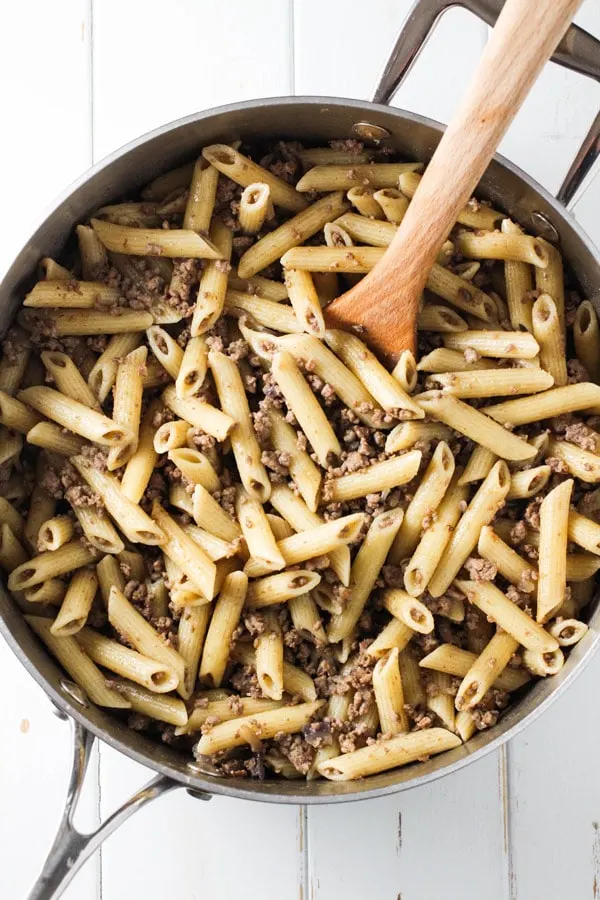
What is the Russian Navy Style Pasta?
Russian Navy Style Pasta is a simple, comforting, and filling dish made with pasta, ground meat, onion, and a few seasonings.
It’s also known as Navy Macaroni, Fleet Macaroni, and Sailors Macaroni.
The History Of Makarony Po Flotski
Macarony Po Flotski is a true Soviet classic that will take you back to USSR.
The legend has it that in the beginning, this dish was served for crews of navy and fishing ships.
The news about this inexpensive dish spread fast, and it became so popular that it was served practically at every canteen from kinder-gardens to factories.
Since it was very easy to make, Macarony Po Flotski became a favorite dish among college and university students who were living in dorms and had to cook for themselves.
Eventually, it made its way into the kitchens of Soviet home cooks.
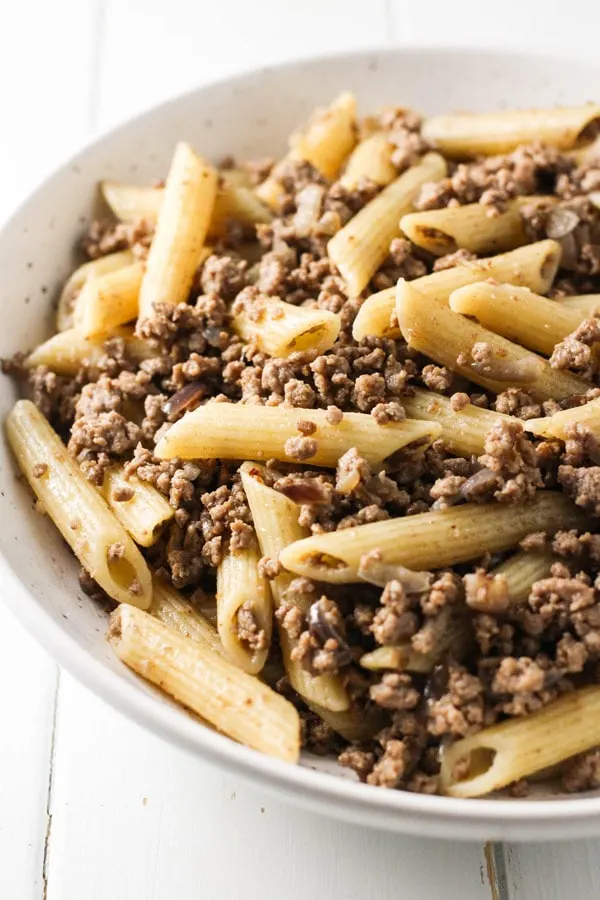
My Experience with This Dish
In my family, only my Grandfather cooked Makarony Po Flotsky. He wasn’t a great cook and only knew how to cook about five or six dishes.
My Grandfather and I loved all things noodles. So, whenever I stayed with him, he always made it for dinner.
Ingredients for Russian Navy Style Pasta
This Navy Macarony is made with basic ingredients that most people have on hand in their fridge and pantry.
In addition to onion and some kind of fat or oil for frying, all you need are pasta and meat.
You can use all kinds of pasta for this dish. Thick pasta shapes that are medium in size, such as fusilli, penne, rigatoni, rotini, tagliatelle, etc. are best.
Usually, Macarony Po Flotski is made with beef or a mix of beef and pork. You can cook the meat yourself from scratch or use Tushonka, which is a canned stewed meat product popular in Russia and other countries of the former Soviet Union. Tushonka was often used to make Navy Macarony in remote locations where fresh meat wasn’t available.
To make the dish more flavourful, you can add a little bit of garlic, red paprika, and tomato paste.
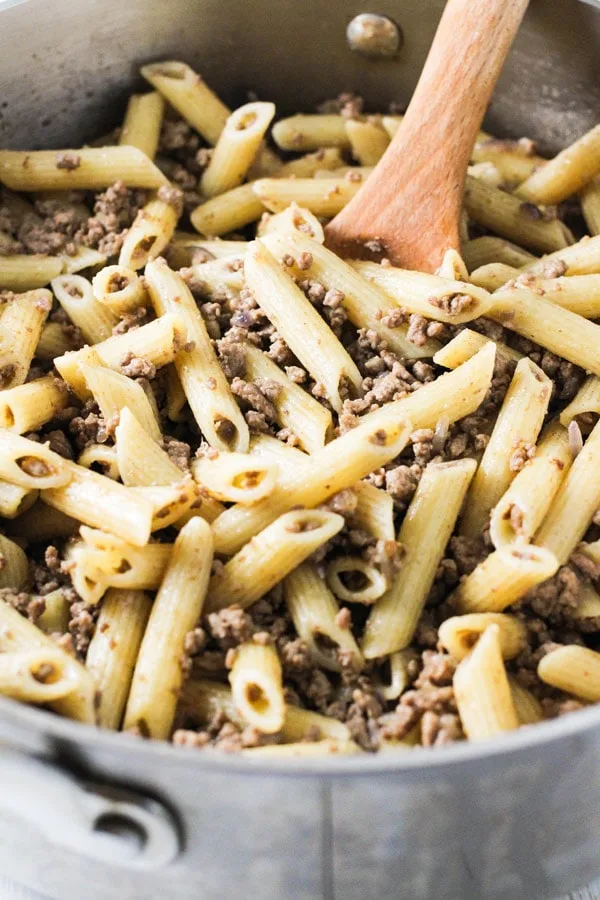
How to Make Russian Navy Style Pasta
There are three ways to make this Russian pasta dish:
1) With Tushonka. To make the dish with Tushonka, cook it first on a skillet over medium heat until most of the liquid has evaporated.
Since Tushonka is usually seasoned, adjust the seasonings to taste.
2) With boiled meat. Do you want to make Macarony Po Flotski and prepare some homemade beef broth at the same time? Then this method is for you. This is a frugal way to cook when one product is used to prepare two different dishes.
For this method, you can use meat on the bones which is often cheaper. To make the Navy Pasta with boiled meat, cook the meat and bones first in some water.
When the meat is done, scrape it from the bones and process it in a food processor. Mix the meat with pasta and use the broth to make a soup.
3) With ground beef. Another popular method to make the Russian Navy Pasta (and the method I prefer) is to cook it with ground beef. To prepare the Navy Pasta this way, cook the ground meat first with some onion and seasonings and then mix it with pasta.
You will find the detailed recipe for this method below in the recipe card.
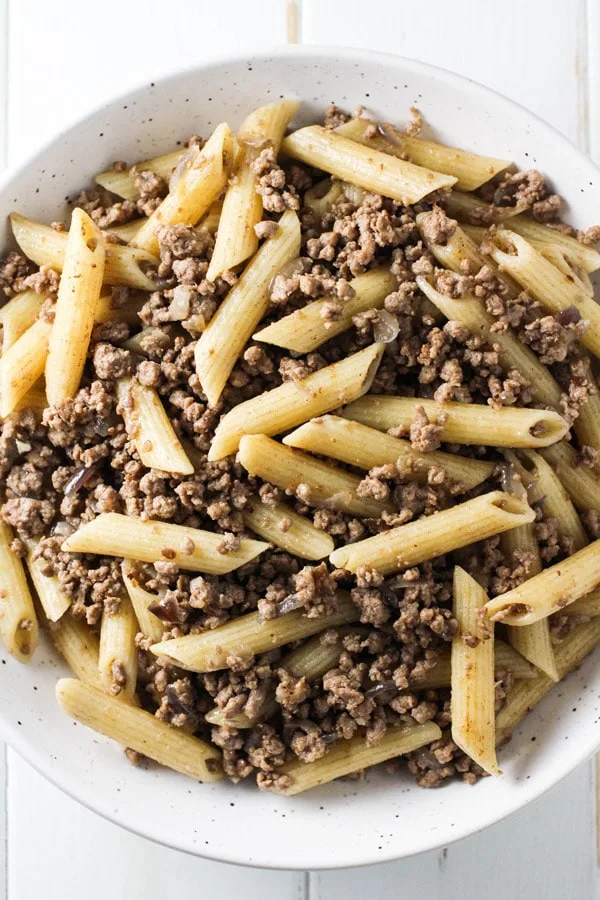
Now It’s Your Turn
So, what do you think about this popular Soviet dish? Have you tried it before? Is it something you would like to recreate at home?
Please let us know in the comments below.
Makarony Po Flotski (Russian Navy Style Pasta)
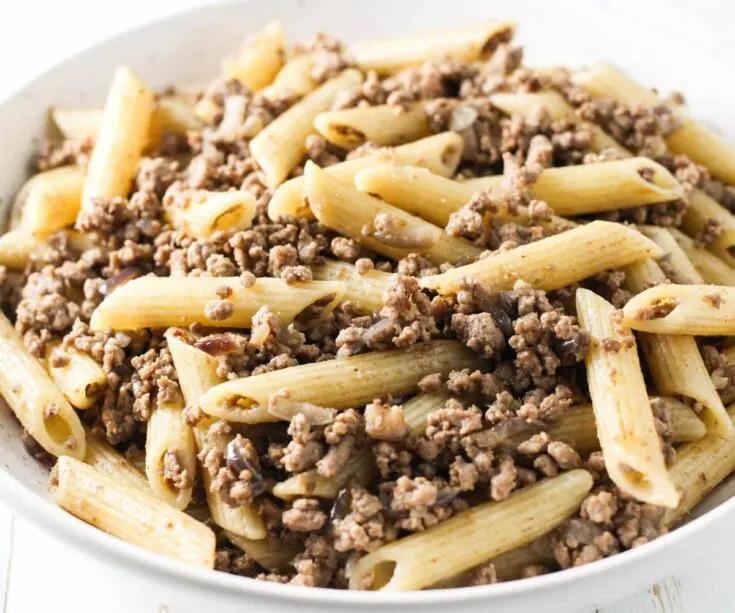
Makarony Po Flotski or Russian Navy Style Pasta is a quick, budget-friendly pasta and beef dinner.
Ingredients
- 2 Tbsp vegetable oil
- 1 medium onion, thinly sliced
- 1 1/2 pound ground beef
- 1/2 tsp garlic powder
- 1/4 tsp red paprika
- 1/2 tsp salt or to taste
- 1 pound pasta
- 1 Tbsp butter
Instructions
- In a large skillet, heat the oil over medium heat. Add the onion and cook stirring occasionally until the onion is golden, for about 4 to 6 minutes. Once the onion is caramelized, remove it from the skillet and set aside.
- To the same skillet, add the ground beef. Break the ground beef apart with a spatula and cook until the meat is cooked through. Add the garlic powder and red paprika. Mix and season with salt.
- Add the cooked onion to the beef. Take the skillet off the heat and set aside until the pasta is done cooking.
- Cook the pasta according to the instructions on the packaging. Make sure to not overcook it. Once the pasta is finished cooking, preserve about 1/2 cup of the pasta water and drain the pasta.
- Add the butter, drained pasta, and 1/2 cup of pasta water to the ground beef. Heat over medium-high heat and cook stirring from time to time for about 3 minutes. Take off the heat and serve.
Nutrition Information:
Yield:
4Serving Size:
1/4 recipeAmount Per Serving: Calories: 739Total Fat: 40g
If you liked this recipe, here are some similar dishes you may enjoy!

Maria is a food blogger and recipe developer who loves creating easy and healthy recipes for her website MariaUshakova.com. When not researching the latest healthy food trends, Maria enjoys cooking Russian and Armenian dishes and exploring international cuisine. Maria is an aspiring food photographer and dog lover. She lives in Toronto, Canada, with her husband Sedrak and their dog Toby. Follow Maria for healthy meal ideas, cooking tips, food photography and more on Facebook, Pinterest, and Instagram.
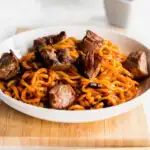
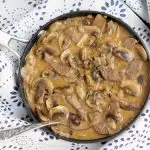
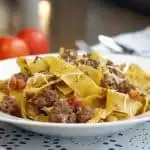
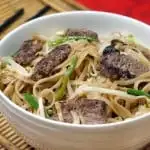

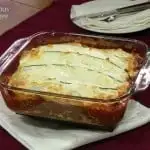
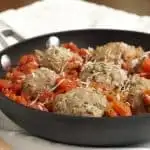

Santa
Sunday 7th of January 2024
I'm from Latvia and this dish like for yourself is steeped in memories. My favourite version is made by my mum who would add ketchup or tomato paste to it while cooking. She'd make the biggest pot of it and it'd be gone in less than two days every time, I'd even sneak little plates of it straight from the fridge in between meals (strangely those plates always tasted the best :D). I don't actually think that this dish is particularly great, but it's so full of memories and nostalgia, that it just ticks every box for me. Thank you for taking me on this journey.
Sarah - Curious Cuisiniere
Monday 8th of January 2024
Thank you for sharing your memories of this dish!
Dave
Sunday 2nd of July 2023
LOL, I made it before, but I didn't know it was a Russian dish. I am Sicilian so we always ate pasta in all different ways. They stole it from us,, LOL
Sarah - Curious Cuisiniere
Friday 7th of July 2023
It is so interesting how regional ingredients find their way into culinary staples in different parts of the world!
R Pointer
Monday 31st of October 2022
I lived in SPB in 2003 and stayed with a family there. Yuri was the breakfast cook and would make this dish every morning with spaghetti noodles. He never told me the name of it, but it was pretty damn good for how simple it was. Tamara, his wife would save me from eating everyday by making Sirniki on Saturday mornings, and blini every so often. Good people to me, and memories I won't every forget.
Sarah - Curious Cuisiniere
Monday 7th of November 2022
Thank you for sharing your memories of this dish!
teddy salad
Monday 30th of May 2022
made it 3 x like its written, love it... ty
Sarah Ozimek
Tuesday 31st of May 2022
So glad you enjoyed it!
Larry Margolis
Friday 2nd of July 2021
During World War 2 Meat was rationed along with many other items. My Mom a dish that I loved called Russian something, I don’t remember the second word. It was made with ground beef, elbow macaroni and ketchup. She cooked it in a frying pan and occasionally some of the elbows would get crunchy, mmm good. There may have been other ingredients; but, I wasn’t into cooking at age 8 or so.
Recently I tried to replicate the recipe using whatever I had on hand - Ground beef, butterfly pasta and Stubbs BBQ sauce. Not exactly the same but in the ballpark. Came out good thanks to the BBQ sauce. I found another slightly different recipe so it seems that your recipe can be the base for whatever is at hand.
Thank you. PS: My Grandparents, both sets, were from Russia.
Sarah Ozimek
Tuesday 6th of July 2021
Food can bring back such memories. Thanks for sharing!